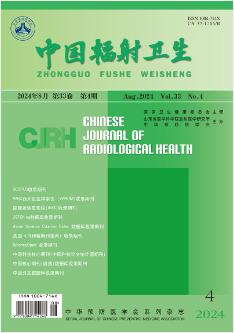磁共振成像预测CT成像的研究进展
引用次数: 0
摘要
Medical images can provide clinicians with accurate and comprehensive patients' information Morphological or functional abnormalities caused by variant diseases can be specified in many aspects Although MR images and CT images can highlight the medical image data of different issue structures of patients, single MR images or CT images cannot fully reflect the complexity of diseases Using MR image to predict CT image is one of the cross modal prediction of medical images In this paper, the methods of MR image prediction for CT image are classified into four categories including registration based on atlas, based on image segmentation method, based on learning method, and based on deep learning method In our research, we included that method based on deep learning should be more promoted in the future by comparing the existing problems and future development of MR image predicting CT image method Abstract: Medical images can provide doctors with accurate and comprehensive patient information. Due to various diseases causing morphological or functional abnormalities in the human body, they can be manifested in many aspects. MR and CT images can focus on presenting medical image data of different tissue structures of patients, but individual MR or CT images cannot fully reflect the complexity of the disease. MR image prediction of CT images belongs to a type of cross modal prediction of medical images. The methods for predicting CT images using MR images are divided into four categories: atlas based methods, image segmentation based methods, learning based methods, and deep learning based methods. This article reviews various methods, existing problems, and future development directions for predicting CT images using MR images, and concludes that deep learning based methods should be the main method for cross modal prediction in the future.本文章由计算机程序翻译,如有差异,请以英文原文为准。
Research progress of MR imaging for prediction of CT imaging
Medical images can provide clinicans with accurate and comprehensive patients’ information.
Morphological or functional abnormalities caused by various diseases can be manifested
in many aspects. Although MR images and CT images can highlight the medical image
data of different tissue structures of patients, single MR images or CT images cannot
fully reflect the complexity of diseases. Using MR image to predict CT image is one
of the cross-modal prediction of medical images. In this paper, the methods of MR
image prediction for CT image are classified into four categoriesincluding registration
based on atlas, based on image segmentationmethod, based on learning method and based
on deep learning method. In our research, we concluded that the method based on deep
learning should bemore promoted in the future by compering the existing problems and
future development of MR image predicting CT image method.
摘要: 医学图像可以为医生提供准确和全面的病患信息。由于人体因各种疾病引起的形态或功能异常可以表现在很 多方面, MR 图像和 CT 图像能重点呈现出患者不同组织结构的医学图像数据,
但单独的 MR 图像或者 CT 图像不能 全面反应出疾病的复杂性。MR 图像预测 CT 图像属于医学图像跨模态预测的一种, 将 MR 图像预测 CT 图像的方法 分为
4 类, 基于图集的方法、基于图像分割的方法、基于学习的方法和基于深度学习的方法。本文对 MR 图像预测 CT 图像的各类方法、存在问题和未来发展方向进行综述, 得出结论基于深度学习的方法应是未来跨模态预测的主要
方法。
求助全文
通过发布文献求助,成功后即可免费获取论文全文。
去求助
来源期刊
CiteScore
0.80
自引率
0.00%
发文量
7142
期刊介绍:
Chinese Journal of Radiological Health is one of the Source Journals for Chinese Scientific and Technical Papers and Citations and belongs to the series published by Chinese Preventive Medicine Association (CPMA). It is a national academic journal supervised by National Health Commission of the People’s Republic of China and co-sponsored by Institute of Radiation Medicine, Shandong Academy of Medical Sciences and CPMA, and is a professional academic journal publishing research findings and management experience in the field of radiological health, issued to the public in China and abroad. Under the guidance of the Communist Party of China and the national press and publication policies, the Journal actively publicizes the guidelines and policies of the Party and the state on health work, promotes the implementation of relevant laws, regulations and standards, and timely reports new achievements, new information, new methods and new products in the specialty, with the aim of organizing and promoting the academic communication of radiological health in China and improving the academic level of the specialty, and for the purpose of protecting the health of radiation workers and the public while promoting the extensive use of radioisotopes and radiation devices in the national economy. The main columns include Original Articles, Expert Comments, Experience Exchange, Standards and Guidelines, and Review Articles.

 求助内容:
求助内容: 应助结果提醒方式:
应助结果提醒方式:


